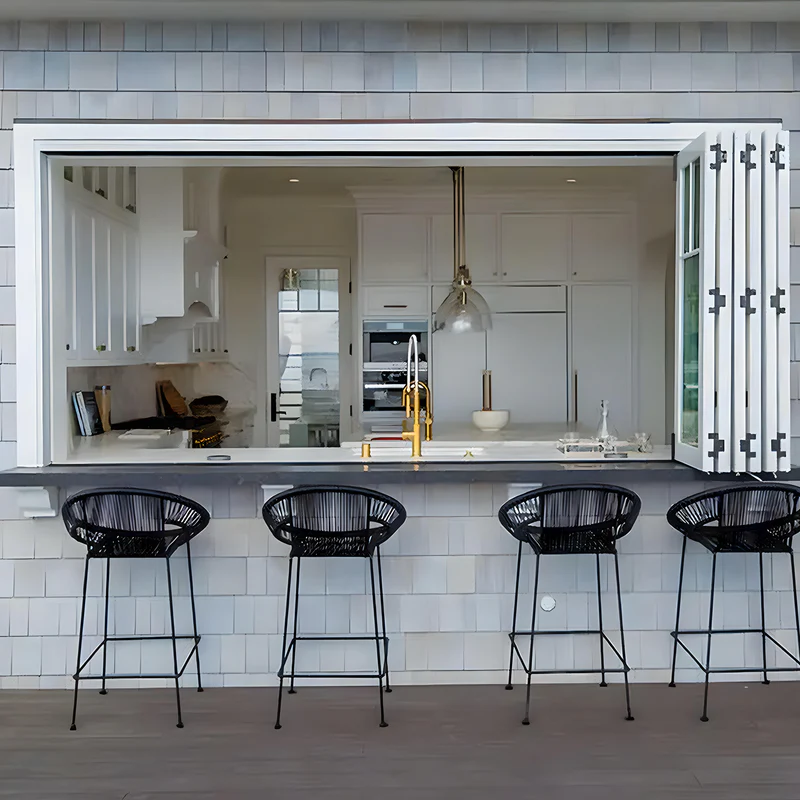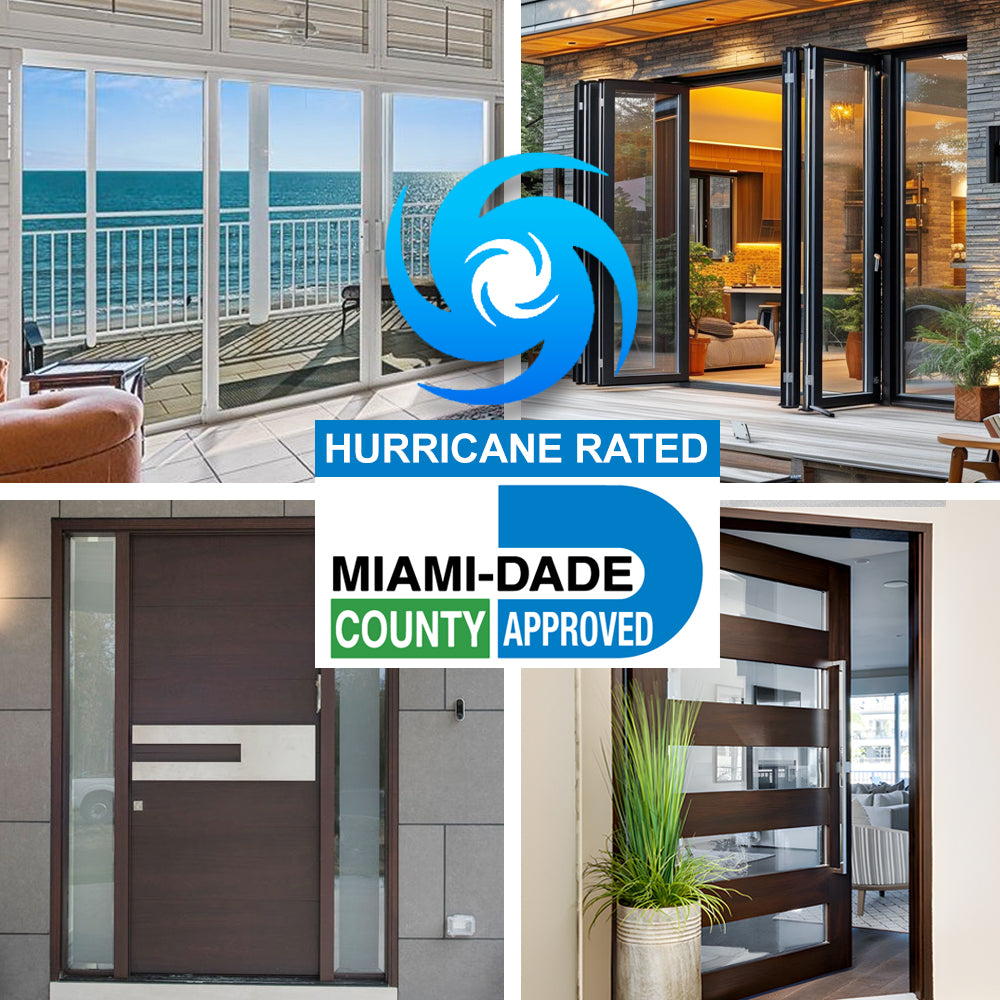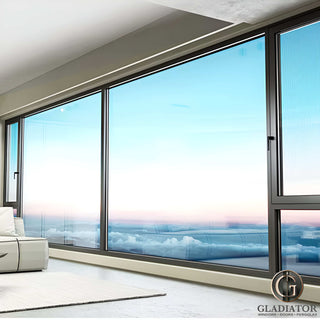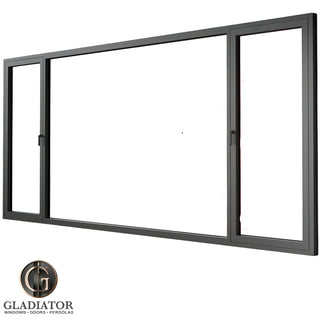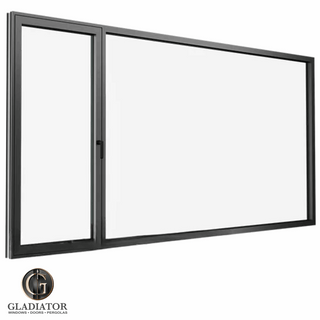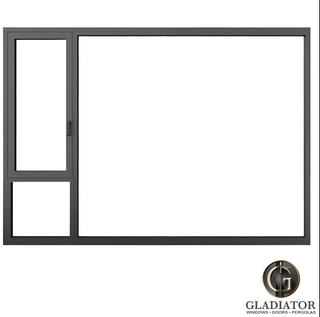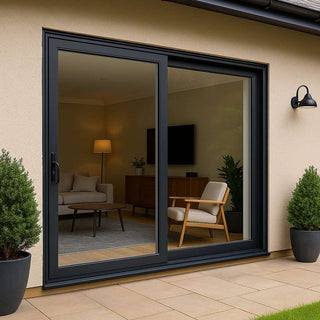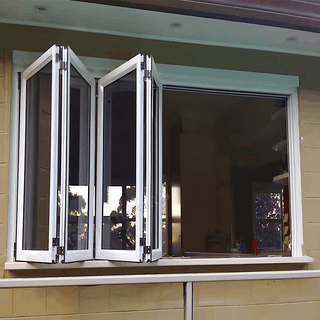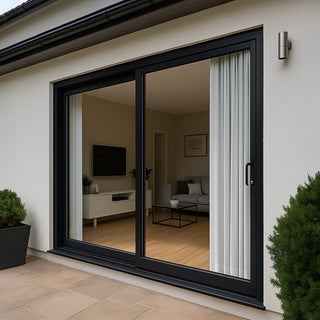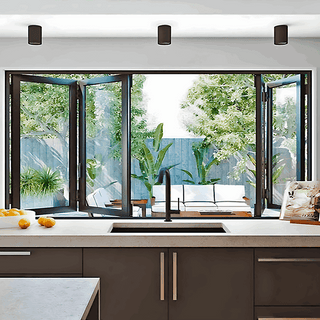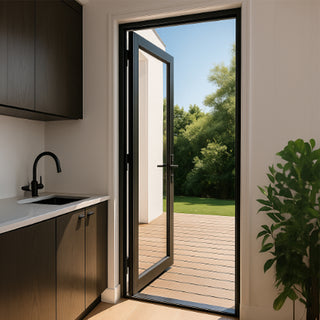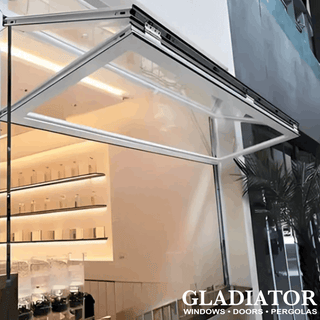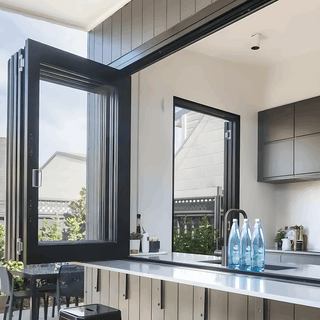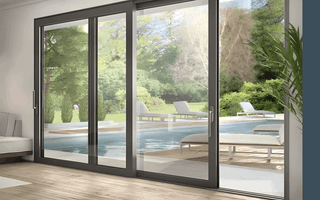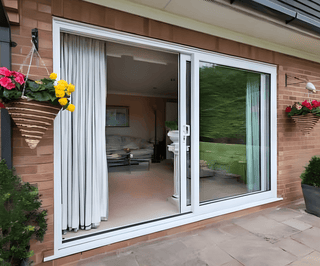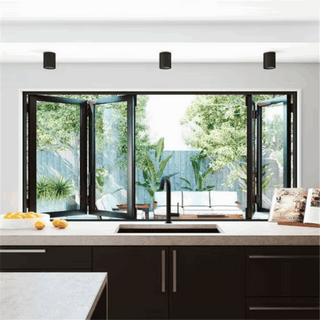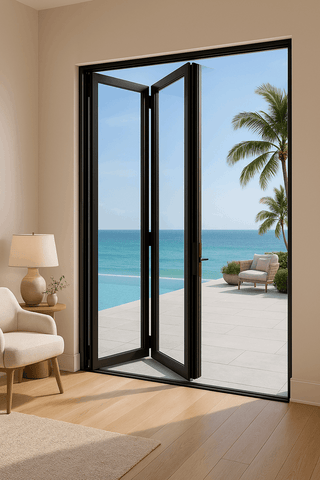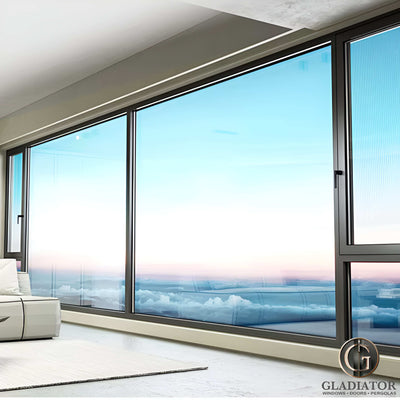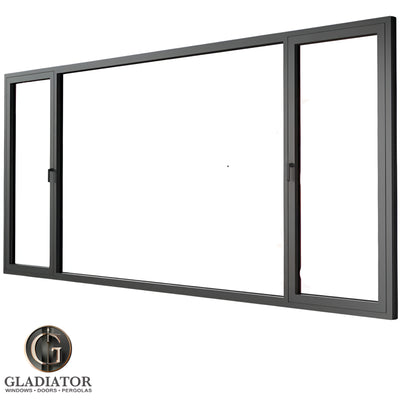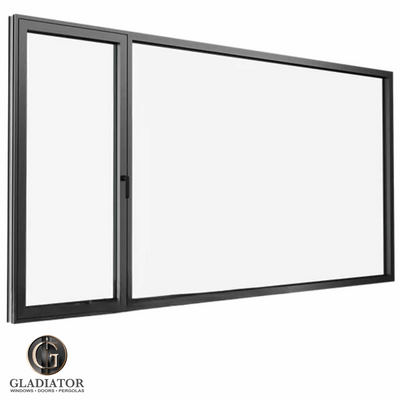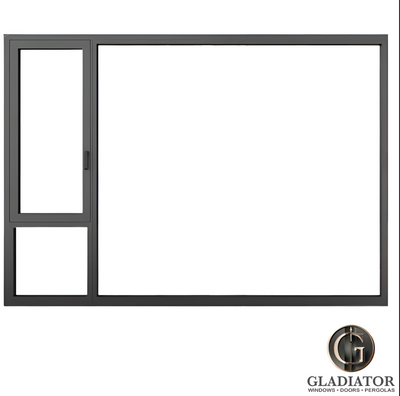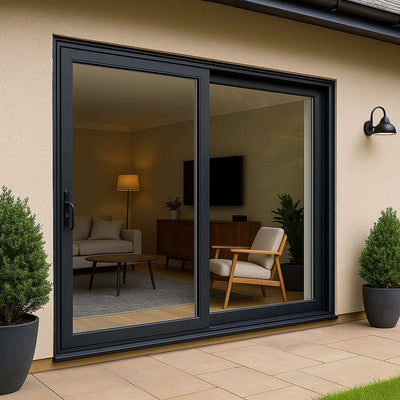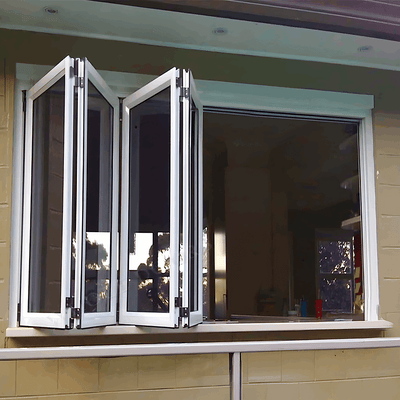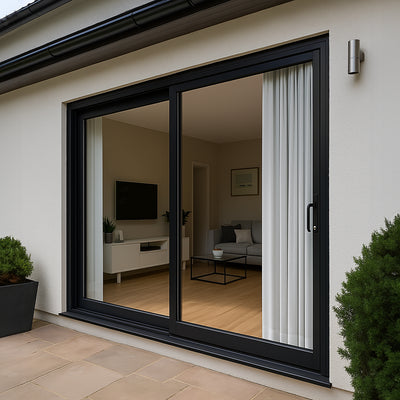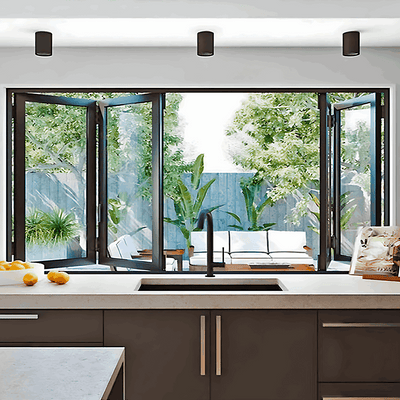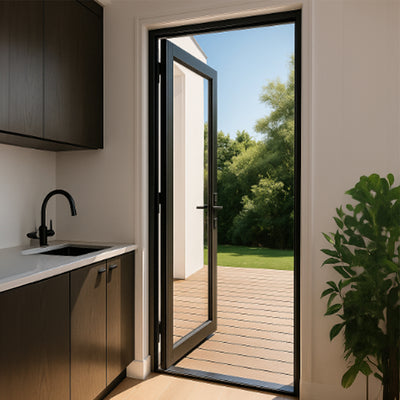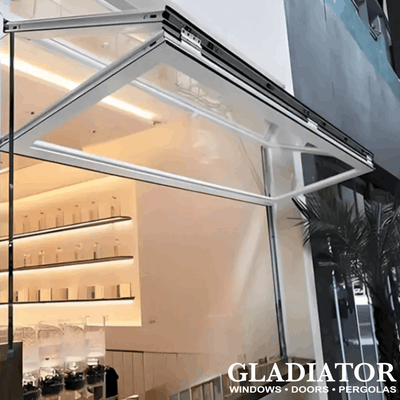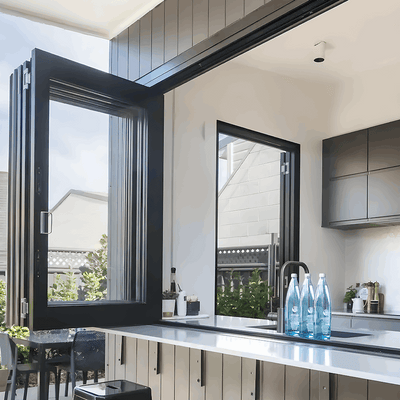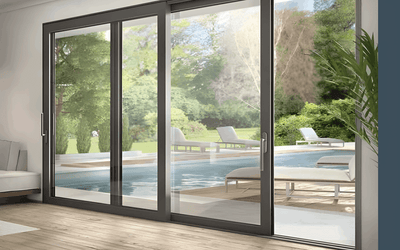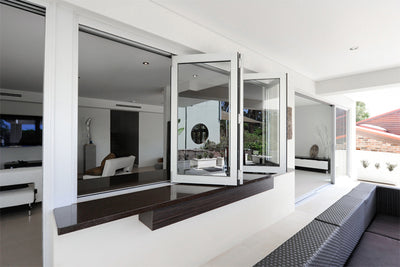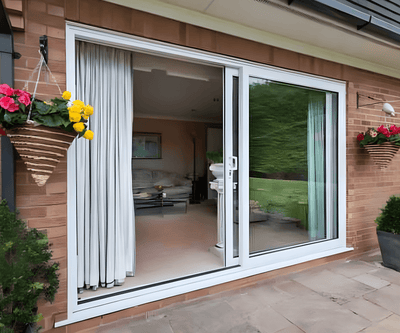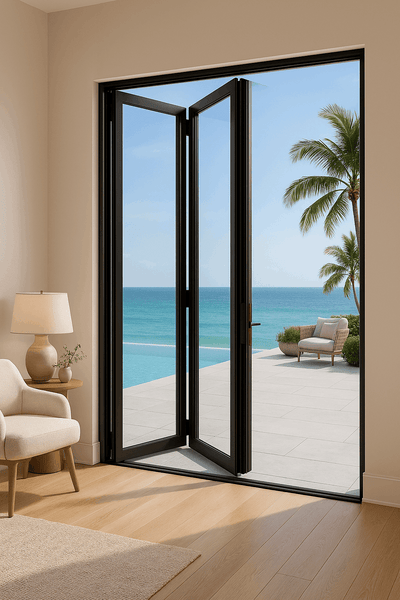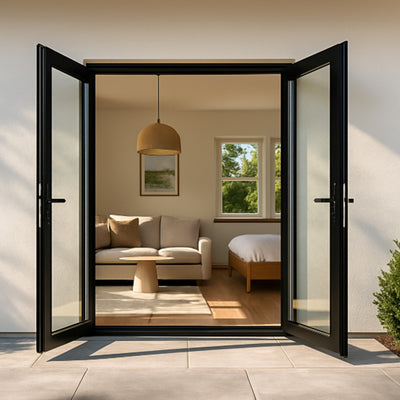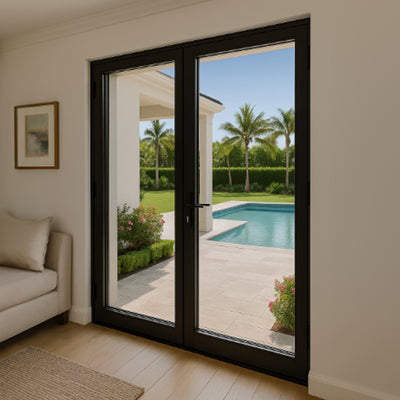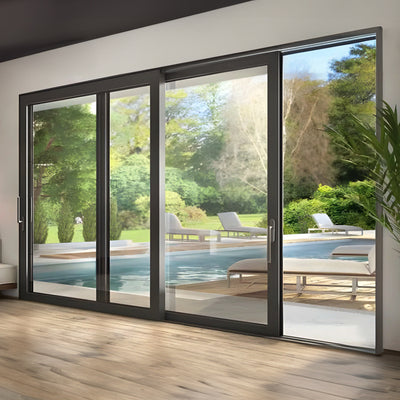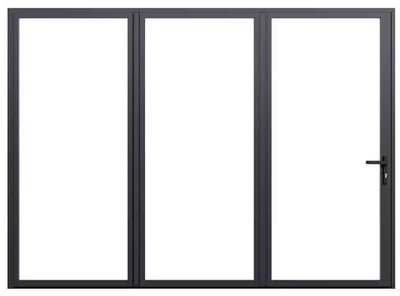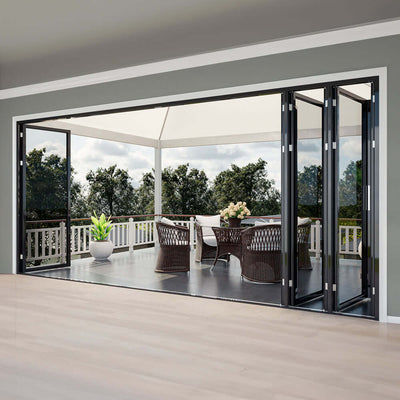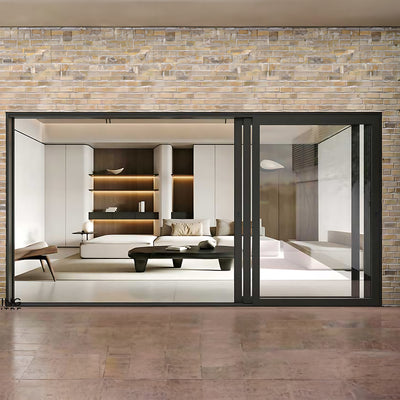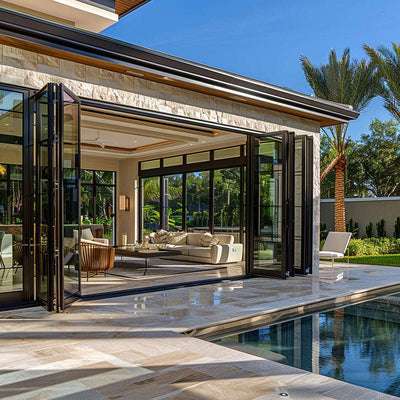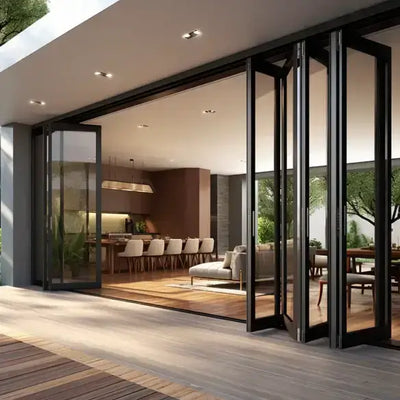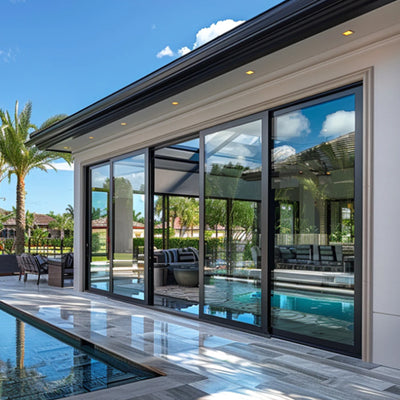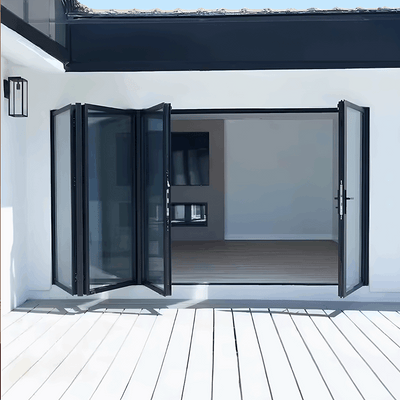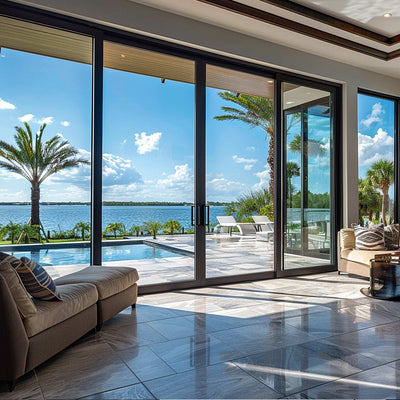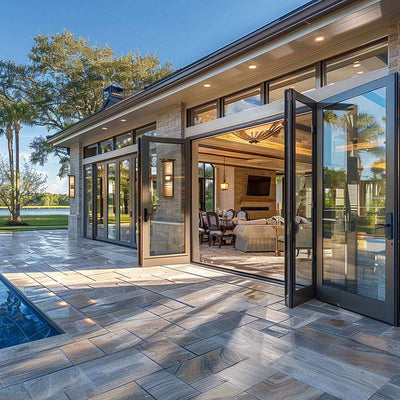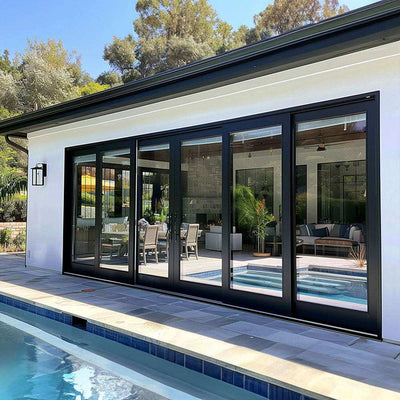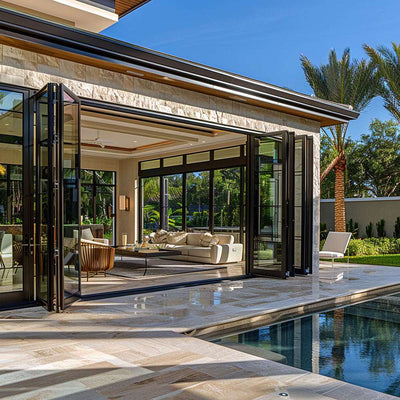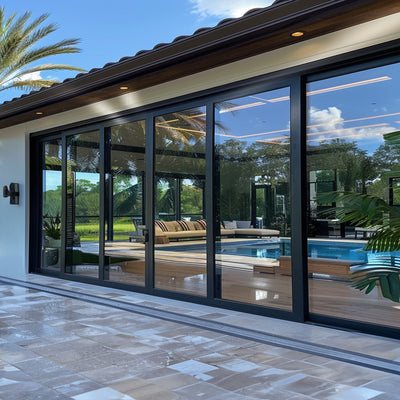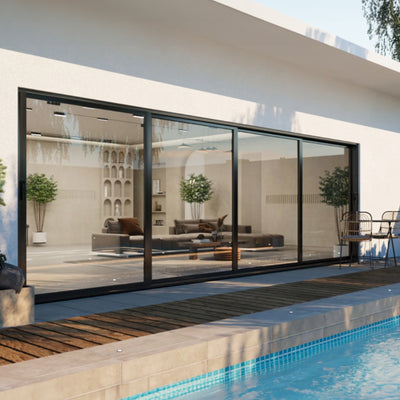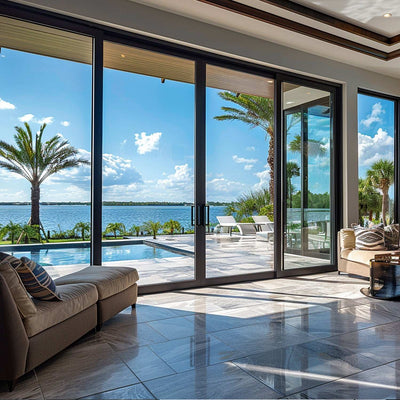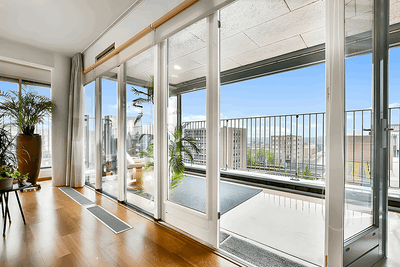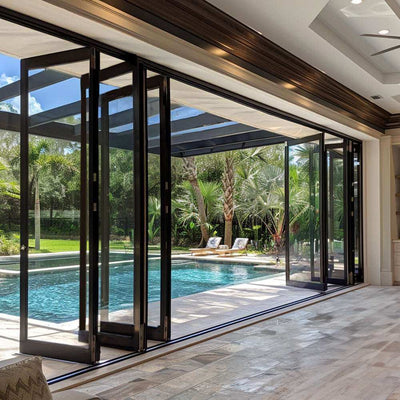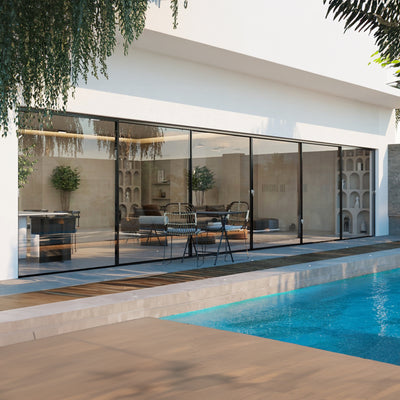Demystifying Energy Efficient Window Ratings
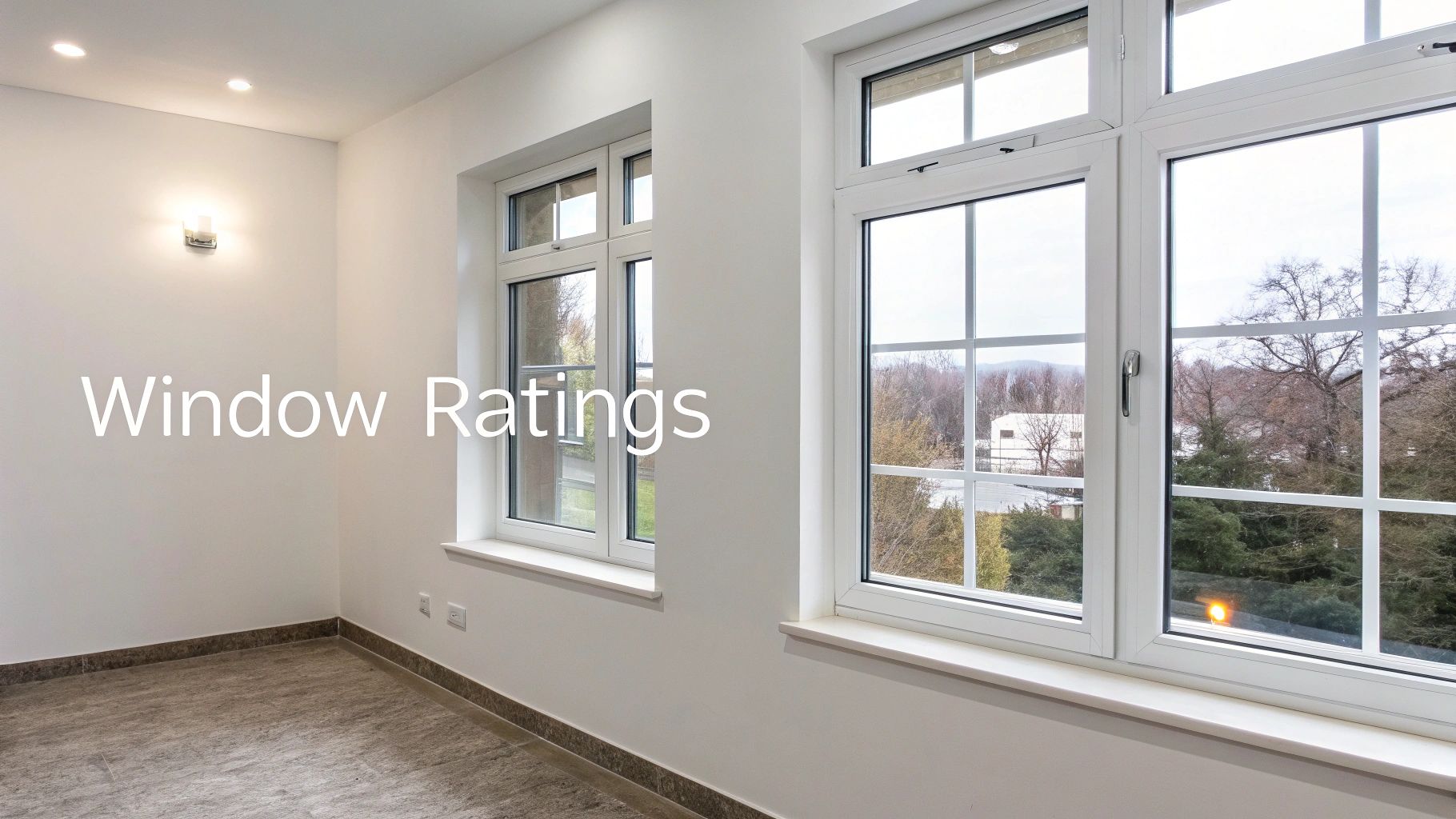
Choosing energy-efficient windows can seem overwhelming. However, understanding the ratings system simplifies the process, allowing you to make informed decisions for a more comfortable and cost-effective home. It all starts with learning a few key metrics provided by the National Fenestration Rating Council (NFRC). These ratings are essential for making a wise investment.
Key Window Ratings Explained
Several key ratings help you evaluate a window's energy performance. These ratings, found on the NFRC label, provide a standardized way to compare different window products. Understanding them is the first step to finding the right windows for your needs.
-
U-Factor: This measures how well a window prevents heat loss. Similar to the R-value of insulation, a lower U-factor indicates better insulation. This is particularly important for reducing energy waste during the winter.
-
Solar Heat Gain Coefficient (SHGC): The SHGC measures how much solar heat passes through the window. A lower SHGC is beneficial in warmer climates to keep your home cool, while a higher SHGC can be advantageous in colder regions for passive solar heating.
-
Visible Transmittance (VT): This rating indicates how much natural light enters through the window. A higher VT allows more daylight, potentially reducing the need for artificial light. However, balancing VT is crucial; while more natural light is desirable, excessive light can cause glare and overheating.
For those in drier climates, water-efficient fixtures are also an important consideration. Check out resources like water conservation faucets for more information. Don't forget about air leakage, as even small gaps can significantly impact energy efficiency. You can explore topics like this and more on our blog sitemap.
Why Ratings Matter
These ratings have real-world implications, translating directly to tangible benefits. Energy-efficient windows are increasingly popular for their energy-saving potential. The global market for these windows is expected to reach $29,023.8 million by 2027, with a CAGR of 8.1% between 2020 and 2027. You can find more details about this growth in the energy-efficient window market report. This increasing demand highlights the significant impact these windows have on individual homes and global energy use. The improved insulation provided by a low U-factor can significantly lower heating costs, while a properly chosen SHGC can reduce your reliance on air conditioning. These savings add up to a quicker return on your window investment. Moreover, energy-efficient windows enhance home comfort by reducing drafts and maintaining a consistent indoor temperature.
Mastering the U-Factor: Your Window's Insulation Score
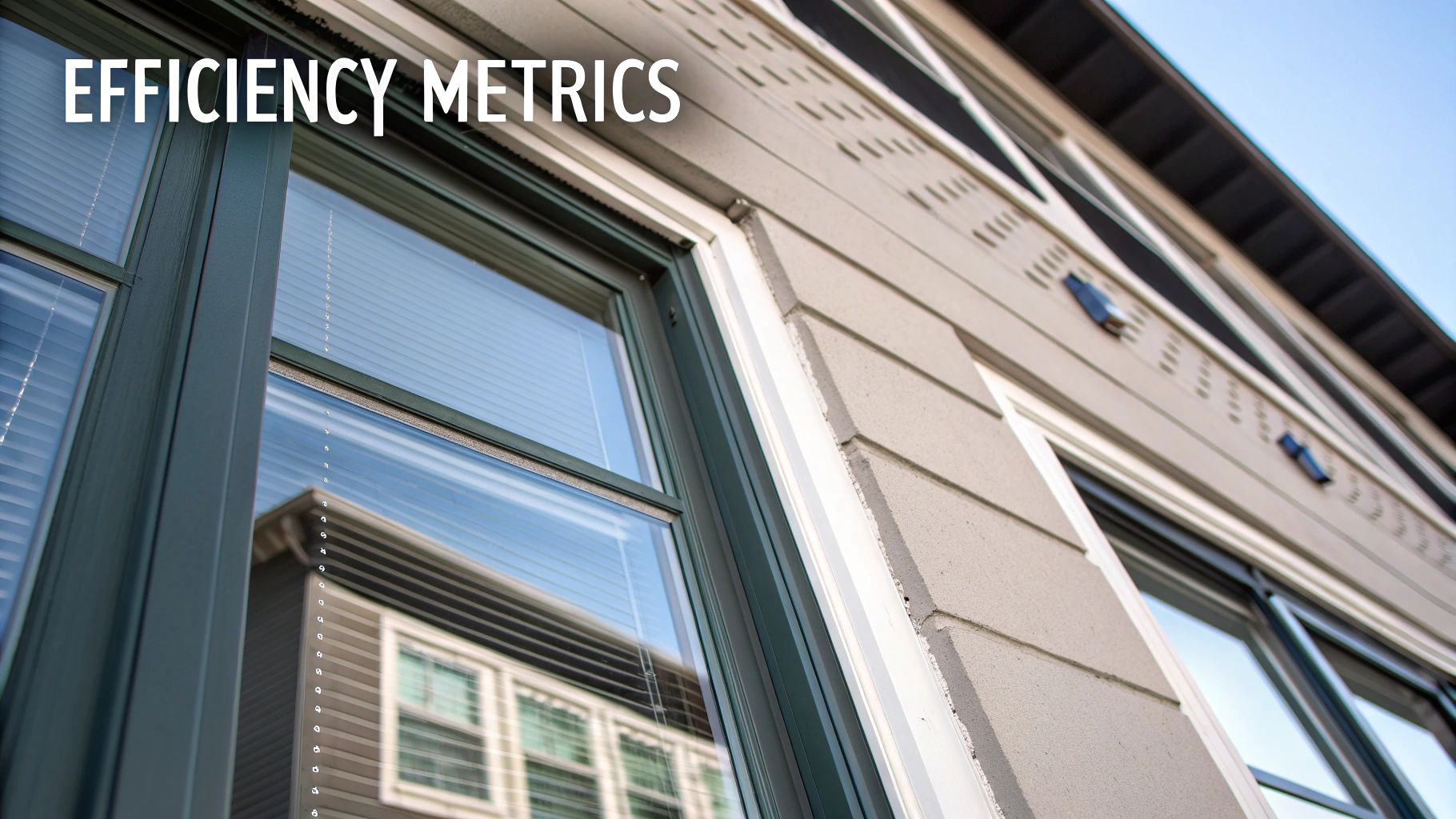
The U-factor is essentially an energy efficiency rating for your windows. It tells you how well a window insulates your home and prevents heat from escaping. A lower U-factor means better insulation and greater energy savings.
Understanding U-Factor Values
U-factor values typically fall within a range of 0.20 to 1.20. A window with a U-factor of 0.30 performs significantly better than one with a U-factor of 0.50. This difference can substantially impact your energy bills, especially in colder climates.
Even seemingly small differences in U-factor can lead to noticeable changes in your home's comfort level, minimizing drafts and cold spots. This translates to a cozier living environment year-round.
How Frame Materials and Glass Impact U-Factor
The materials used in window frames and the type of glass significantly influence the U-factor. Wood frames generally provide better insulation than aluminum frames, although advancements like thermal breaks can improve aluminum frame performance. You might be interested in: How to master your window and door needs.
Double-pane windows, often featuring low-E coatings and gas fills between the panes, further enhance insulation, resulting in lower U-factors. These technologies trap heat more effectively, minimizing energy waste and maximizing comfort.
Optimal U-Factor Ranges by Region
Your ideal U-factor depends heavily on your local climate. Metrics such as the Solar Heat Gain Coefficient (SHGC) and the U-factor determine a window's insulation and solar heat regulation effectiveness. These ratings are crucial for certifications like the internationally recognized Energy Star Rating. Find more detailed statistics here.
In colder climates, aim for U-factors of 0.30 or lower. In milder climates, a U-factor up to 0.50 may be adequate. Understanding your region’s typical temperatures helps you select the most energy-efficient windows.
Invisible Technologies Worth Considering
Several less obvious technologies can significantly improve a window's U-factor.
-
Low-E Coatings: These microscopic coatings reflect heat back into your home in winter and block heat gain in summer.
-
Gas Fills: Argon or krypton gas fills between glass panes boost insulation.
-
Thermal Breaks: These materials in window frames (particularly metal frames) minimize heat transfer.
To help you choose the right window for your needs, we've compiled the following table:
U-Factor Ratings by Window Type This table compares U-factor ratings across different window types and materials to help homeowners understand performance differences.
| Window Type | Typical U-Factor Range | Best For | Cost Range |
|---|---|---|---|
| Single-Pane | 0.9 - 1.2 | Mild climates, budget-conscious projects | Low |
| Double-Pane | 0.25 - 0.50 | Most climates, good balance of performance and cost | Moderate |
| Triple-Pane | 0.15 - 0.30 | Extreme climates, maximum energy efficiency | High |
| Wood Frame | 0.30 - 0.70 | Traditional styles, good insulation | Moderate to High |
| Vinyl Frame | 0.20 - 0.50 | Low maintenance, good insulation | Moderate |
| Aluminum Frame (with thermal breaks) | 0.25 - 0.60 | Modern styles, durability | Moderate to High |
As shown in the table, triple-pane windows offer the best U-factors, while single-pane windows offer the least insulation. Frame material also impacts cost and energy efficiency.
By understanding the U-factor, you can make informed decisions about your window choices, leading to optimal insulation, improved comfort, and significant energy savings for your home.
Solar Heat Gain: Balancing Warmth and Efficiency
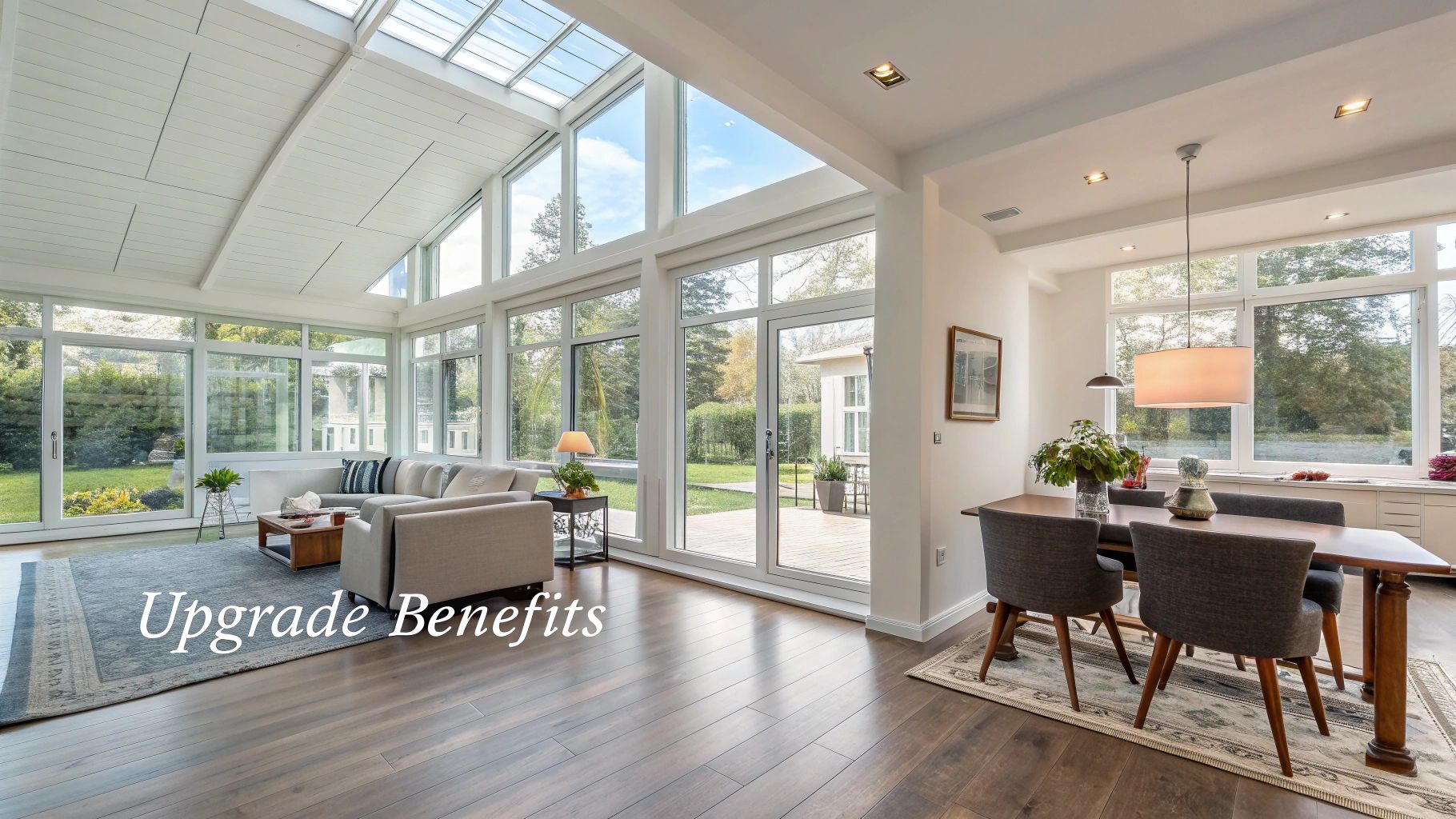
Sunlight streaming through windows creates a welcoming atmosphere. But this solar radiation also affects your home's energy efficiency. This is where the Solar Heat Gain Coefficient (SHGC) comes in. This important window rating measures how much solar heat passes through your windows.
Understanding the SHGC
The SHGC is a number between 0 and 1. A lower SHGC means less solar heat enters your home. A higher SHGC means more heat transmission.
For example, a window with an SHGC of 0.4 allows 40% of the sun's heat to pass through. Understanding and optimizing your SHGC can greatly affect your home's temperature and energy use.
Regional Considerations for SHGC
The ideal SHGC isn't universal. In colder northern climates, a higher SHGC can be helpful. More solar heat during winter can passively warm your home and lower heating costs.
In hotter southern regions, a lower SHGC is crucial. This prevents overheating and minimizes air conditioning use.
Optimizing SHGC for Your Home
Several factors determine the best SHGC for your home. Home orientation is key. South-facing windows get the most sunlight. A lower SHGC often makes sense for these rooms to prevent overheating. Learn more in our article about window and door options. North-facing windows may benefit from a higher SHGC to maximize passive solar heating.
Room-Specific SHGC Recommendations
Think about a room's function when optimizing SHGC. Living rooms and kitchens, where natural light is desirable, might handle a slightly higher SHGC.
In bedrooms, temperature control is important for sleep. A lower SHGC is often better to prevent overheating during the day. Exterior shading, like trees or awnings, can also affect your optimal SHGC. These can reduce the need for extremely low SHGC ratings, even in sunny locations. Balancing these factors helps you choose windows that provide energy efficiency and comfort.
Beyond the Basics: Air Leakage and Light Transmission
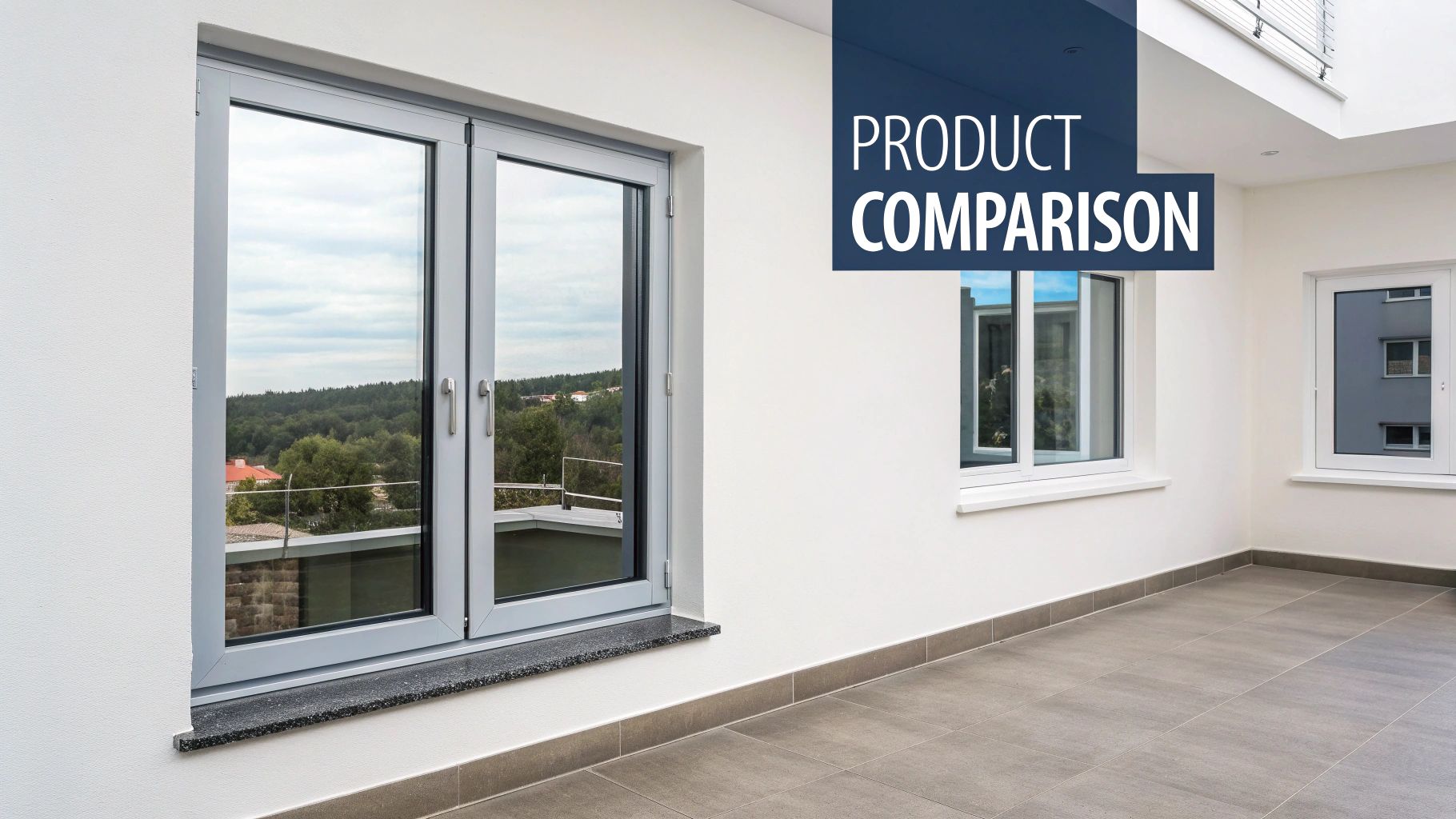
While U-factor and SHGC ratings are essential for energy-efficient windows, other important factors often go unnoticed. Two key metrics are Air Leakage (AL) and Visible Transmittance (VT). Understanding these ratings can significantly improve your home's comfort and energy efficiency.
Minimizing Energy Loss Through Air Leakage
Air leakage refers to the amount of air passing through gaps and cracks in a window assembly. This seemingly small issue can contribute significantly to energy waste. A higher AL rating indicates more air leakage, resulting in uncomfortable drafts and increased heating and cooling costs.
A window with a lower AL rating performs better at maintaining a comfortable indoor temperature and minimizing drafts, especially in harsh weather. This makes focusing on windows with low AL ratings particularly crucial in climates with extreme temperature fluctuations.
Even minor improvements in air leakage can noticeably impact your energy bills and overall comfort.
The Importance of Visible Transmittance
Visible transmittance (VT) measures the amount of natural light that enters through your windows. A higher VT rating allows more daylight, potentially reducing your reliance on artificial lighting and brightening your living space.
However, it's important to strike a balance with VT. Too much sunlight can cause glare and overheating, particularly in south-facing rooms. Consider factors like room function, orientation, and existing light conditions when choosing the right VT for your windows. You might find helpful resources like this guide on windows and doors.
Balancing VT for Optimal Comfort and Efficiency
The ideal VT rating depends on the room's purpose. For example, living rooms and kitchens, where natural light is desirable, may benefit from a higher VT. In bedrooms, where temperature control and light blocking are priorities, a lower VT might be more suitable.
Your home's orientation and surrounding environment also play a role. Homes with ample shade may benefit from higher VT ratings to maximize natural light. Conversely, homes with significant sun exposure might need lower VT ratings to minimize heat gain and glare. By considering air leakage and light transmission alongside other energy-efficient window ratings, you can make informed decisions that improve both comfort and energy savings.
The ENERGY STAR Advantage: Certification That Matters
After researching individual window ratings like U-factor and SHGC, it's important to understand ENERGY STAR certification. This recognized label indicates a window meets energy efficiency guidelines established by the U.S. Environmental Protection Agency (EPA) and the U.S. Department of Energy.
Decoding the ENERGY STAR Label
The ENERGY STAR label simplifies choosing high-performing windows. It offers a clear indicator of quality, making comparisons between models easier. Products with this label are generally in the top 15% to 30% of their class for energy efficiency.
Each certified window displays a label with performance ratings, including U-factor, SHGC, and the Energy Rating (ER). The label also specifies the designated climate zone(s) and includes a product description for transparency.
The Power of the Energy Rating (ER)
The ER is a single number summarizing a window's overall energy performance. It considers solar heat gain, heat loss, and air leakage. A higher ER indicates better performance. This metric allows homeowners to quickly evaluate and compare window options.
Real-World Savings with ENERGY STAR
ENERGY STAR certified windows can lead to lower utility bills. Switching could reduce your energy costs by 13% compared to standard windows. These savings add up, offering a good return on investment.
Financial Incentives: Maximizing Your Return
Besides energy savings, financial incentives are often available for ENERGY STAR windows. These may include utility rebates and tax credits. While researching these programs takes time, the potential savings are substantial.
Climate Zone Considerations
ENERGY STAR certification is climate-based. The label identifies the specific zone(s) for optimal window performance, ensuring your choice suits your local weather. Learn more about how climate influences window decisions in our guide on mastering your window and door needs.
By understanding the ENERGY STAR program, you can streamline window selection, reduce energy expenses, and create a more comfortable home. This blue label offers a concrete way to improve energy efficiency and build a more sustainable future.
Climate-Specific Strategies: Optimizing for Your Region
Your geographical location plays a significant role in determining the most important energy-efficient window ratings. A sunny, southern climate has different needs than a cold, northern region. This guide will help you choose the best energy-efficient window ratings for your climate.
Prioritizing U-Factor in Cold Climates
Minimizing heat loss is key for homes in cold climates. A low U-factor is essential. A lower U-factor means better insulation, keeping heat inside during harsh winters. For example, a window with a U-factor of 0.25 retains heat much better than a window with a U-factor of 0.50. This results in lower heating bills and a more comfortable home. Investing in well-insulated windows can significantly reduce your reliance on heating systems.
The Importance of SHGC in Hot Climates
For homes in hot, sunny climates, the Solar Heat Gain Coefficient (SHGC) is most important. A lower SHGC blocks excess solar heat from entering your home, minimizing cooling costs during hot summers. A window with an SHGC of 0.30 allows less solar heat through than a window with an SHGC of 0.60. Managing solar heat gain keeps your home cooler and reduces your air conditioning use.
Microclimate Considerations: Beyond the Broad Strokes
General climate zones are a good starting point, but your microclimate matters too. Local shade, wind patterns, and proximity to water can impact the optimal window ratings for your home. A home shaded by trees might benefit from a slightly higher SHGC, even in a warm climate, to maximize natural light and passive solar heating.
Room-by-Room Recommendations
Optimizing energy efficiency often requires a room-by-room approach. Think about the purpose and direction each room faces. South-facing rooms get the most sunlight and might need a lower SHGC to avoid overheating. North-facing rooms might benefit from a higher SHGC to use available solar heat. This personalized approach optimizes energy efficiency for each room.
To help you choose the right window ratings, we've compiled a table summarizing recommendations by climate zone:
Optimal Window Ratings by Climate Zone A comprehensive guide showing recommended U-Factor and SHGC ratings across different U.S. climate zones
| Climate Zone | Recommended U-Factor | Recommended SHGC | Special Considerations |
|---|---|---|---|
| 1-4 (Cold) | ≤ 0.30 | ≥ 0.40 | Prioritize high insulation (low U-factor). Consider higher SHGC for passive solar heating. |
| 5 (Mixed) | 0.30 - 0.40 | 0.30 - 0.50 | Balance U-factor and SHGC based on specific heating and cooling needs. |
| 6-8 (Hot) | ≤ 0.40 | ≤ 0.35 | Prioritize low solar heat gain (low SHGC). |
| 2A, 3A (Hot-Humid) | ≤ 0.40 | ≤ 0.25 | Emphasize low SHGC to prevent overheating and humidity buildup. |
This table provides a general guideline. Remember to consider your specific microclimate and individual room needs when making your final decision.
By understanding regional differences and personalizing your approach, you can improve your home's energy efficiency and comfort. Ready to find energy-efficient windows for your climate? Visit Gladiator Window and Doors to explore our selection of high-quality, custom-made windows.









